The United States is home to an impressive diversity of snakes, with over 50 species of venomous serpents slithering across its varied landscapes. From the sun-baked deserts of the Southwest to the humid swamps of the Southeast, these remarkable reptiles have adapted to thrive in numerous ecosystems. While snake bites are relatively rare—with only about 7,000-8,000 venomous bites reported annually in the U.S.—knowing which species pose potential dangers can be lifesaving information for outdoor enthusiasts, homeowners in snake-prone regions, and wildlife admirers. This article explores ten of America’s most notable venomous snakes, detailing their appearance, habitats, behaviors, and the medical significance of their venom. Whether you’re hiking through their territory or simply curious about these fascinating creatures, understanding these serpents is an important step toward coexisting safely with America’s venomous snake species.
Eastern Diamondback Rattlesnake (Crotalus adamanteus)
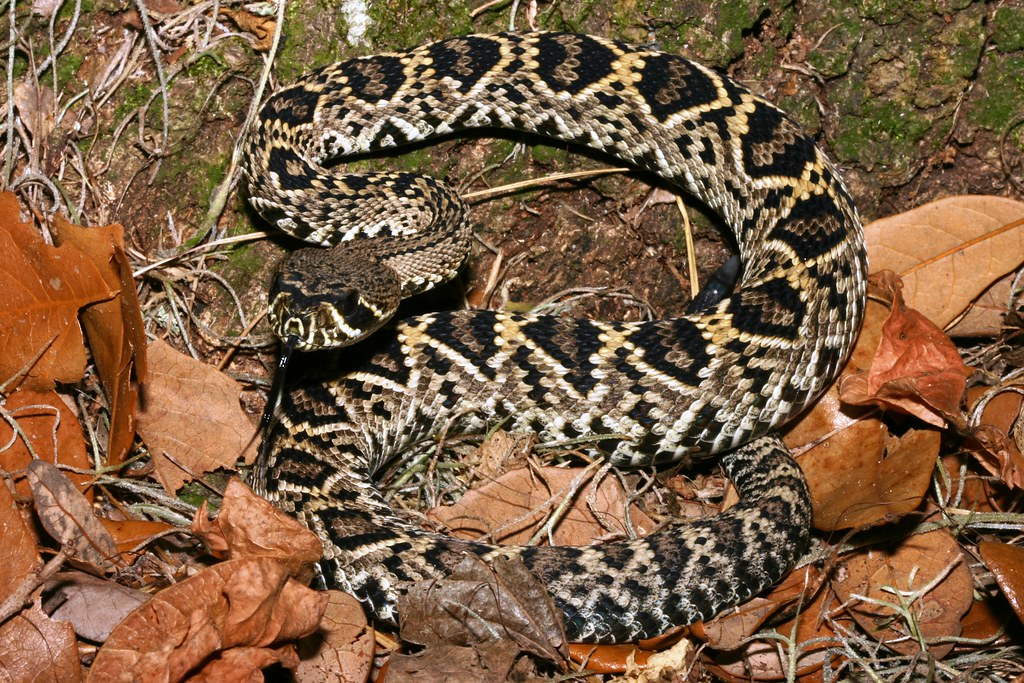
The Eastern Diamondback Rattlesnake holds the distinction of being North America’s largest venomous snake, with specimens occasionally reaching impressive lengths of over 7 feet. These imposing reptiles are instantly recognizable by their distinctive diamond pattern of light-bordered dark rhombuses running down their brownish, yellowish, or grayish bodies, culminating in their namesake rattle at the tail’s end. Native to the southeastern United States—primarily Florida, southern Mississippi, Alabama, and parts of North Carolina—they prefer pine flatwoods, sandy woodlands, and coastal areas where they can find both prey and shelter. Their venom is potently hemotoxic, causing tissue damage, severe pain, swelling, and potentially life-threatening complications if left untreated, making them responsible for the most snake bite fatalities in the United States despite their generally non-aggressive nature when left undisturbed.
Western Diamondback Rattlesnake (Crotalus atrox)
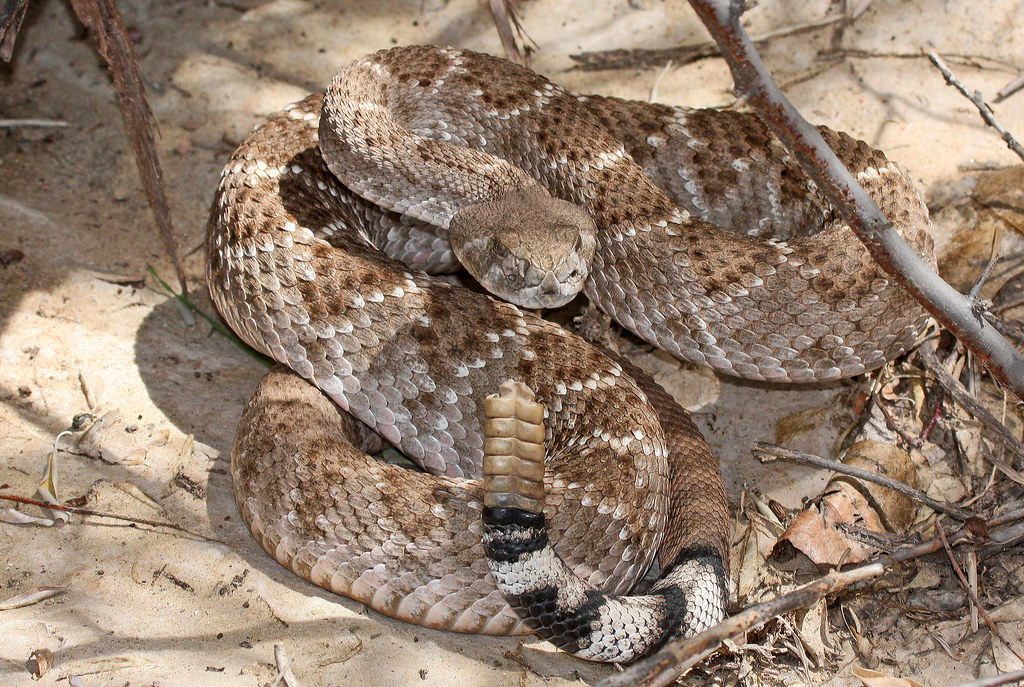
The Western Diamondback Rattlesnake rivals its eastern cousin in notoriety, recognized by its similar diamond-patterned body but distinguished by a series of black and white bands just above its rattle. These heavy-bodied pit vipers typically measure between 3-5 feet long and dominate the arid regions of the southwestern United States and northern Mexico, thriving in deserts, grasslands, and rocky hillsides from central Texas to California. Western Diamondbacks are known for their defensive behavior that includes coiling, rattling vigorously, and striking with remarkable speed when they feel threatened. Their potent hemotoxic venom delivers a cocktail of tissue-destroying enzymes that can cause severe pain, swelling, tissue necrosis, and, in untreated cases, can lead to amputation or death, making them responsible for the majority of serious snake bites in their range.
Timber Rattlesnake (Crotalus horridus)
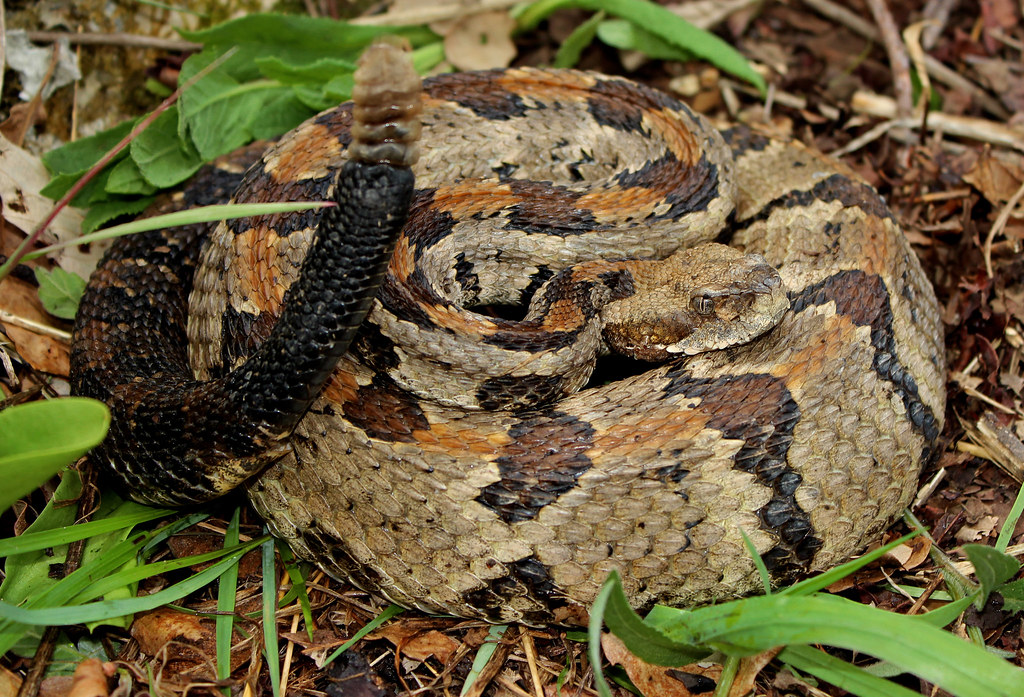
The Timber Rattlesnake, also known as the Canebrake Rattlesnake, is a large, heavy-bodied pit viper with a historical range spanning much of the eastern United States, though habitat loss has significantly reduced its territory. These snakes display considerable color variation, from yellow to black or brown, featuring distinctive dark crossbands that may form a chevron or “V” pattern along their bodies, with many specimens displaying a rusty or coppery-colored stripe running down their spine.
Preferring forested hillsides, mountain woodlands, and rocky outcrops, Timber Rattlesnakes are known for their relatively calm demeanor compared to other rattlesnakes, often choosing to remain motionless or retreat rather than immediately strike when encountered. Despite their more reserved nature, their venom contains powerful hemotoxic components that can cause serious tissue damage, coagulopathy, and systemic effects requiring immediate medical attention if a bite occurs.
Copperhead (Agkistrodon contortrix)
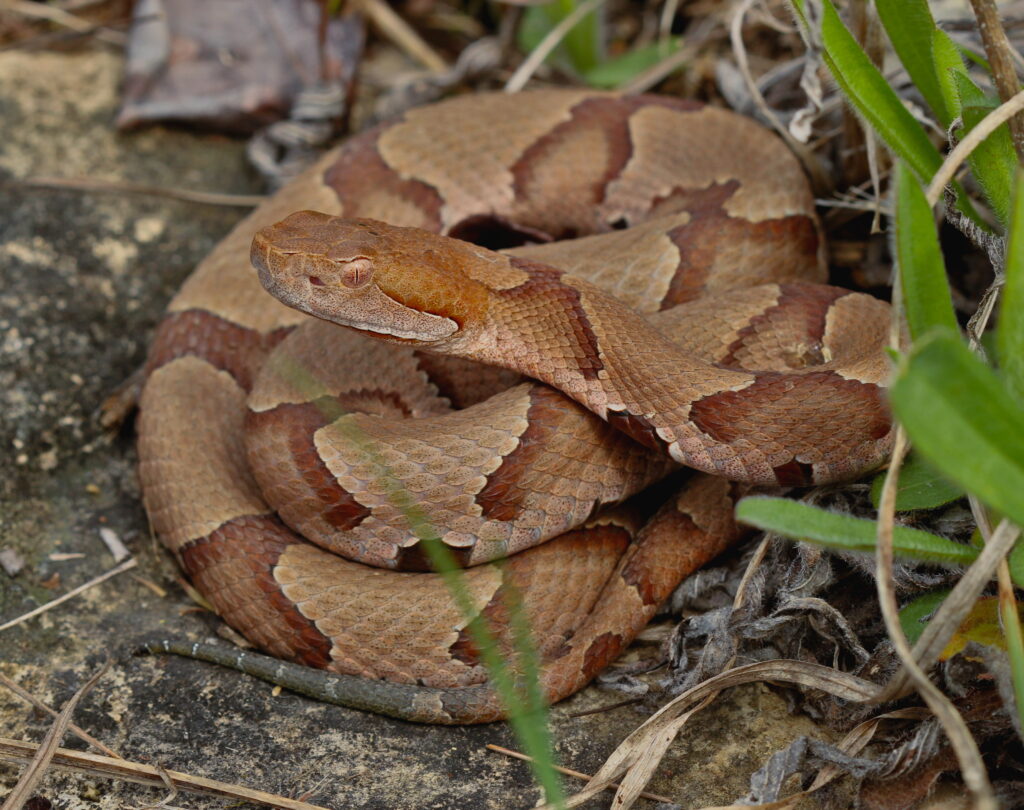
The Copperhead snake is perhaps the most frequently encountered venomous serpent in the United States, inhabiting a vast range across the eastern and central portions of the country from southern New England to Texas. These medium-sized pit vipers are instantly recognizable by their coppery-red heads and distinctive hourglass-shaped crossbands in varying shades of brown, tan, and copper that narrow in the middle of the back, creating a pattern sometimes described as “Hershey’s Kisses” when viewed from the side.
Highly adaptable, Copperheads thrive in diverse habitats including forests, rocky areas, swamplands, and even suburban environments, which contributes to their relatively frequent encounters with humans. While their venom is considered less potent than that of rattlesnakes or cottonmouths, resulting in few fatalities, Copperhead bites are the most common venomous snake bites in many states, causing significant pain, swelling, and sometimes temporary tissue damage that can require medical intervention and rehabilitation.
Cottonmouth/Water Moccasin (Agkistrodon piscivorus)
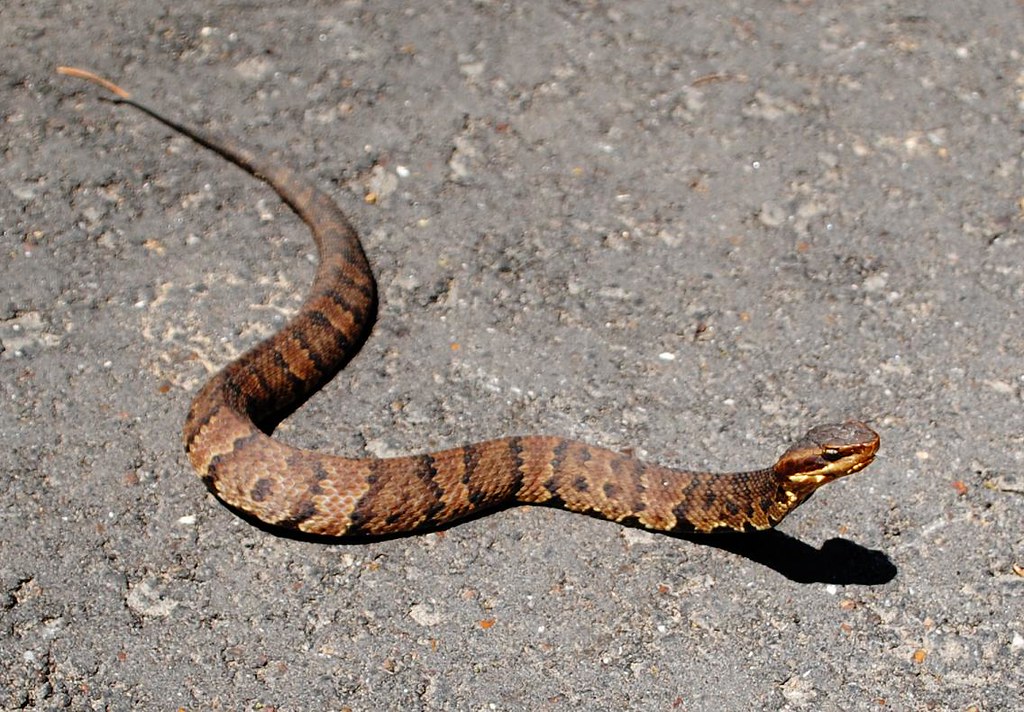
The Cottonmouth, also commonly known as the Water Moccasin, is a semi-aquatic pit viper that inhabits the southeastern United States from Virginia to Florida and westward to Texas, Oklahoma, and Missouri. These substantial snakes, which can grow to over four feet in length, are identifiable by their thick, muscular bodies, broad triangular heads, and coloration that ranges from solid olive-brown to black, sometimes with faint dark crossbands that become less visible as the snake ages.
When threatened, Cottonmouths display their most distinctive feature—the startlingly white interior of their mouth from which they derive their name—while coiling defensively and vibrating their tails. Their strong association with water bodies sets them apart from other American venomous snakes, as they frequently inhabit swamps, marshes, drainage ditches, and the edges of lakes and streams where they prey on fish, amphibians, and small mammals. Cottonmouth venom contains powerful cytotoxic components that can cause significant tissue destruction, intense pain, swelling, and potential systemic effects including coagulopathy, making prompt medical attention essential following a bite.
Coral Snake (Micrurus fulvius)
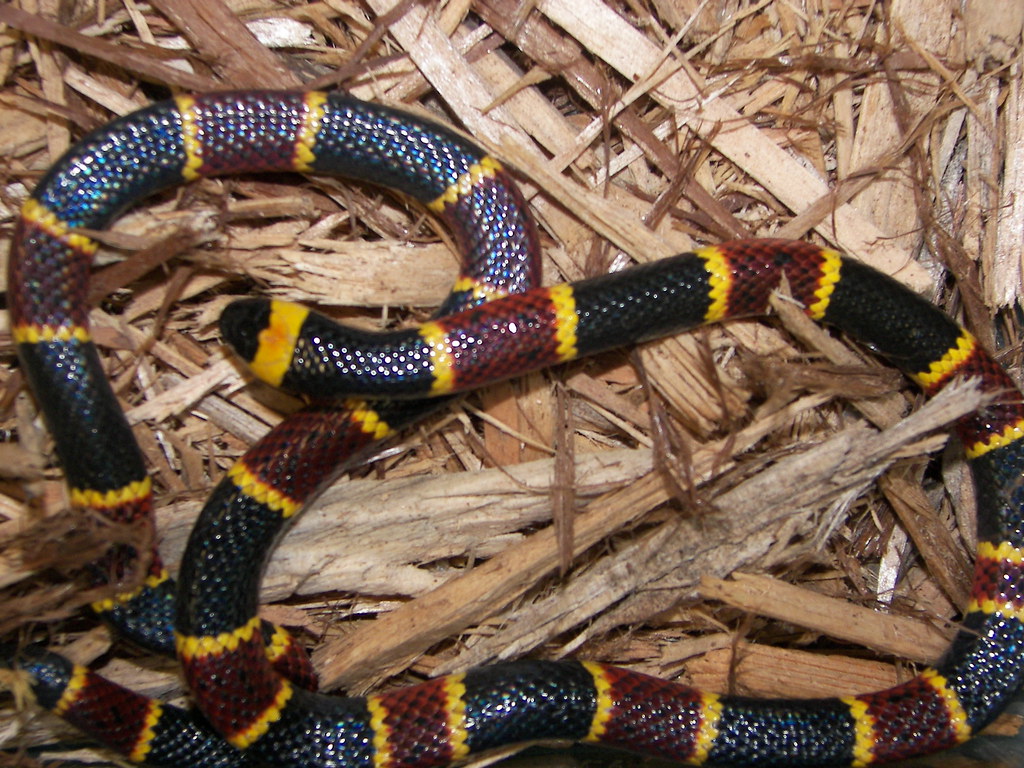
The Eastern Coral Snake stands out among North American venomous serpents with its striking tricolor pattern of bright red, yellow, and black bands that encircle the entire body, embodying the warning rhyme “red touch yellow, kill a fellow” that distinguishes it from similarly colored but harmless mimics like the Scarlet Kingsnake. Unlike the pit vipers that dominate America’s venomous snake roster, Coral Snakes belong to the Elapidae family alongside cobras and mambas, possessing short, permanently erect fangs that deliver a potent neurotoxic venom rather than the hemotoxic venom of rattlesnakes and their relatives.
Found primarily in the southeastern United States from North Carolina to Florida and westward to parts of Texas, these relatively small, slender snakes tend to be secretive and reclusive, spending much of their time burrowing in loose soil or hiding under leaf litter in sandy woods, scrublands, and pine flatwoods. Though Coral Snake bites are rare due to their shy nature and reluctance to bite unless directly handled, their venom is among the most potent of North American snakes, potentially causing slurred speech, double vision, respiratory difficulty, and eventual paralysis that can be fatal without proper antivenom treatment.
Mojave Rattlesnake (Crotalus scutulatus)
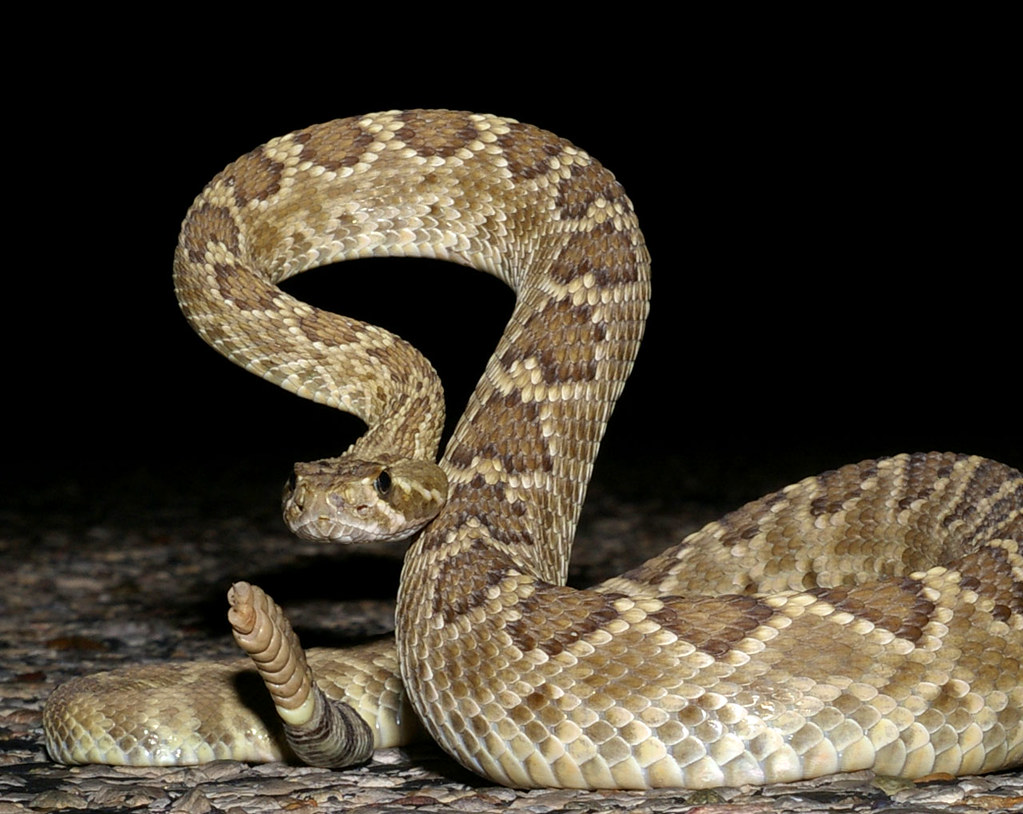
The Mojave Rattlesnake, sometimes called the “Mojave Green,” is considered one of the most dangerous venomous snakes in North America due to its exceptionally potent venom composition. Ranging across the southwestern United States from central California to western Texas and south into Mexico, these medium-sized rattlesnakes inhabit arid environments including deserts, grasslands, and scrublands at elevations up to 8,000 feet. The Mojave can be identified by its greenish-gray to olive coloration with dark diamond or rhomboid blotches outlined by lighter scales, a facial stripe extending from the eye to the corner of the mouth, and of course, its characteristic rattle.
What makes this species particularly dangerous is its unique venom profile—many populations possess a potent neurotoxic component called Mojave toxin in addition to tissue-destroying hemotoxins, creating a devastating combination that can cause respiratory failure, vision problems, paralysis, and cardiovascular damage alongside the typical tissue destruction associated with rattlesnake envenomation. This dual-action venom makes Mojave Rattlesnake bites medical emergencies that demand immediate specialized treatment with appropriate antivenom.
Prairie Rattlesnake (Crotalus viridis)
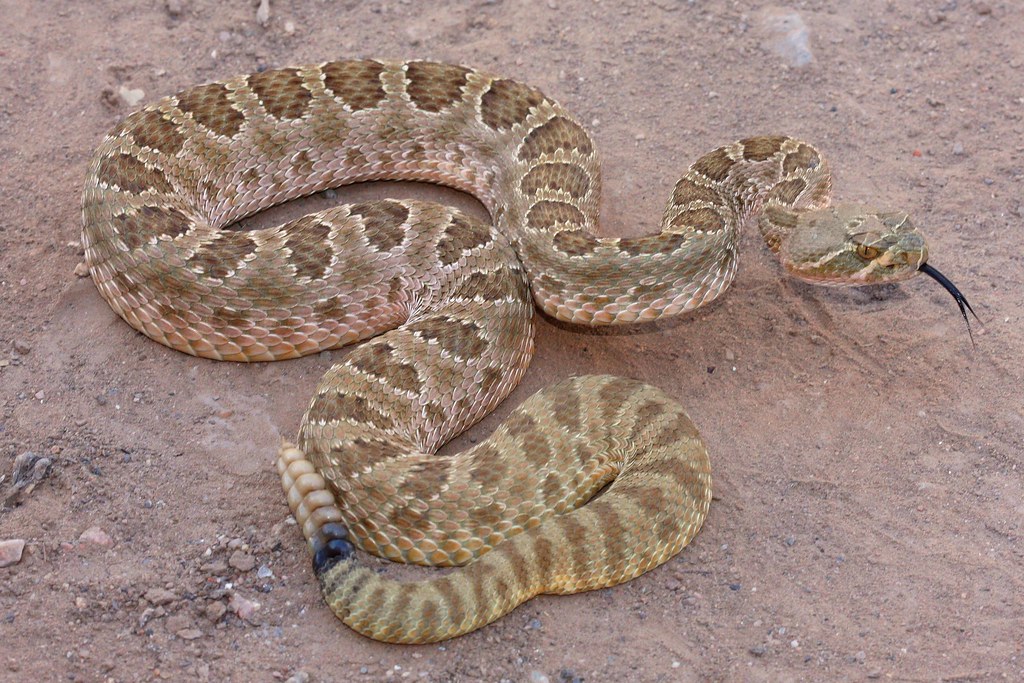
The Prairie Rattlesnake occupies one of the largest geographic ranges of any rattlesnake species, extending from southwestern Canada through the Great Plains of the United States and into northern Mexico. These medium-sized pit vipers typically measure between 3-4 feet in length and display a base coloration that ranges from greenish-gray to brown or olive, adorned with a series of dark oval or rectangular blotches outlined in white or cream down the length of their bodies.
Highly adaptable, Prairie Rattlesnakes thrive in diverse habitats including prairies, grasslands, semi-arid regions, and agricultural areas, often denning communally in rock crevices or abandoned mammal burrows during the winter months. Their venom contains a complex mixture of hemotoxic components that can cause significant tissue damage, pain, swelling, and potential systemic effects including coagulopathy and hypotension if left untreated. Despite their wide distribution and relatively common occurrence, Prairie Rattlesnakes generally prefer to avoid human interaction, typically rattling vigorously and attempting to retreat before resorting to a defensive strike when threatened.
Pygmy Rattlesnake (Sistrurus miliarius)
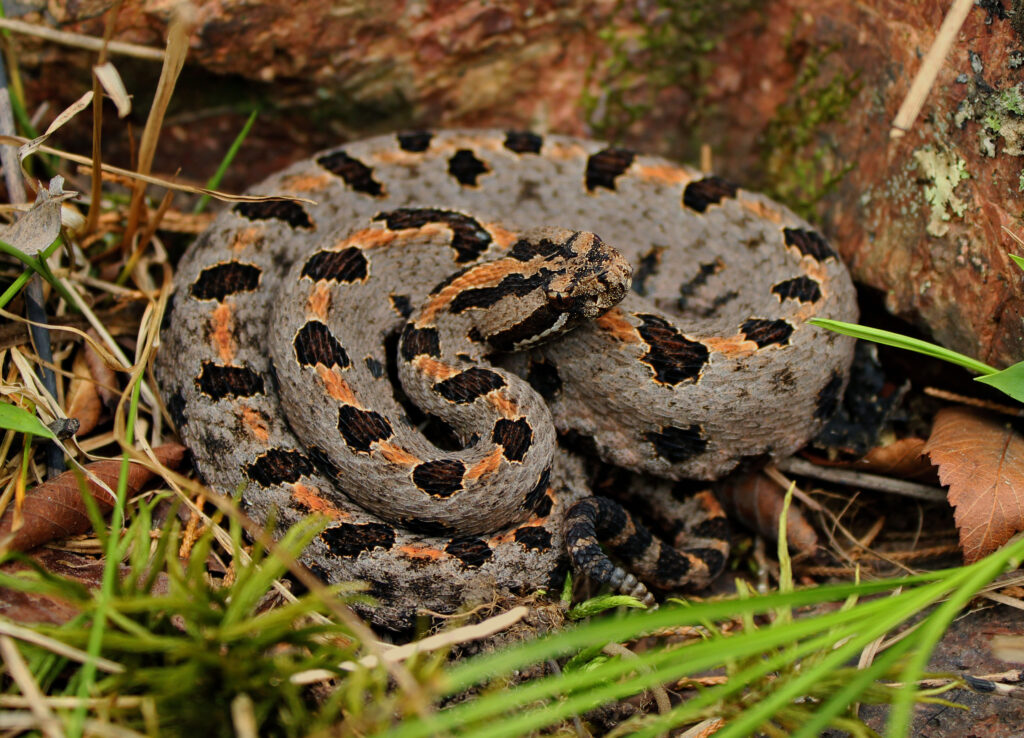
The Pygmy Rattlesnake, also known as the Ground Rattlesnake, is one of North America’s smallest venomous serpents, rarely exceeding 24 inches in length. These diminutive pit vipers inhabit the southeastern United States from eastern North Carolina to eastern Texas and throughout Florida, displaying considerable regional variation in coloration that includes gray, tan, lavender, or reddish-brown base colors adorned with a row of dark spots down the midline and smaller spots along the sides.
Unlike larger rattlesnake species, the Pygmy Rattlesnake’s rattle is tiny and produces a buzzing sound that’s often compared to the noise of an insect rather than the loud warning of its larger cousins, which, combined with their small size and excellent camouflage, makes them easy to overlook in their preferred habitats of pine flatwoods, mixed forests, and wetland edges. Though small, these snakes possess a potent hemotoxic venom that can cause significant localized pain, swelling, and tissue damage, with bites requiring medical attention despite being rarely fatal to healthy adults. Their small size and cryptic nature make Pygmy Rattlesnakes responsible for a disproportionate number of bites when they’re accidentally stepped on or handled by people who mistake them for non-venomous species.
Sidewinder (Crotalus cerastes)
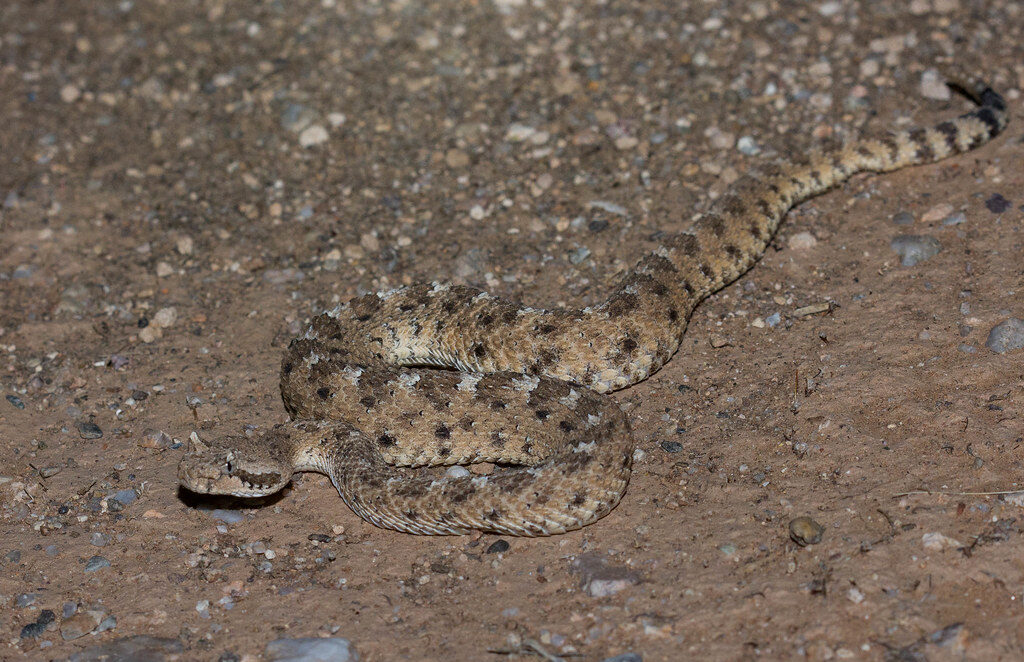
The Sidewinder Rattlesnake, immediately recognizable by the distinctive horn-like supraocular scales above its eyes, is perfectly adapted to life in the harsh desert environments of the southwestern United States and northwestern Mexico. These relatively small rattlesnakes, typically measuring between 1.5-2.5 feet in length, have evolved a unique method of locomotion—their namesake “sidewinding” movement—where they throw their bodies in a lateral loop motion that minimizes contact with the hot desert sand and leaves distinctive J-shaped tracks. Their light coloration, usually tan or cream with darker brown blotches, provides excellent camouflage against the desert substrate where they inhabit sand dunes, desert flats, and washes across the Mojave, Sonoran, and Colorado deserts.
Sidewinders are primarily nocturnal, especially during hot summer months, emerging from burrows at night to hunt lizards, small rodents, and other desert-dwelling prey using heat-sensing pits located between their eyes and nostrils. Though their venom is less potent than that of many other rattlesnake species, containing primarily hemotoxic components that cause pain, swelling, and tissue damage, Sidewinder bites still constitute medical emergencies requiring prompt treatment, especially given the remote locations where encounters often occur.
Massasauga Rattlesnake (Sistrurus catenatus)
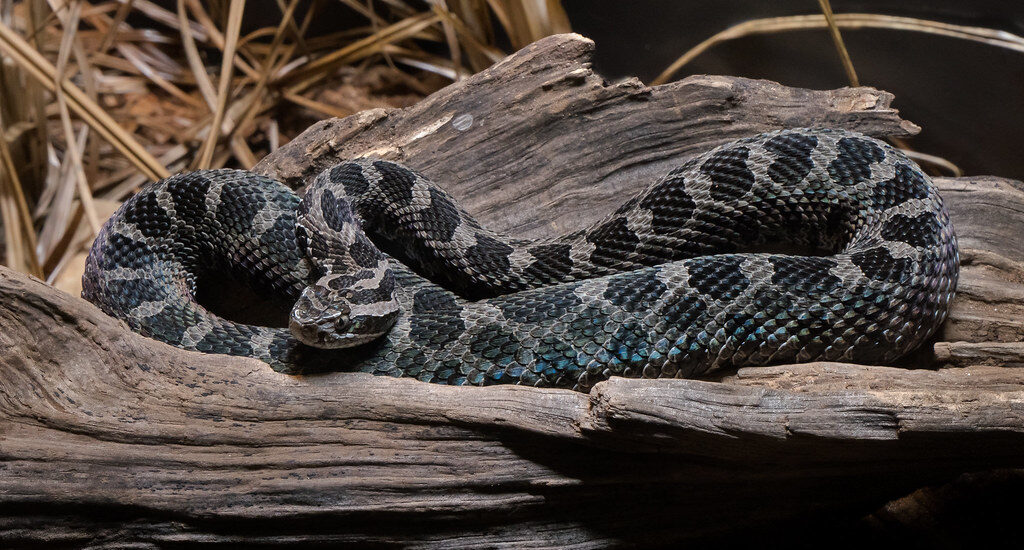
The Massasauga Rattlesnake is a small to medium-sized pit viper with a fragmented range across the central and Great Lakes regions of the United States and into southern Canada, where its populations have experienced significant decline due to habitat loss and persecution. These stout-bodied snakes typically measure 18-30 inches in length and are identified by their gray or brownish-gray ground color marked with a row of large, rounded brown blotches along the back and smaller blotches along the sides, along with a distinctive dark stripe extending from the eye to beyond the jaw.
Unlike the larger rattlesnake species of the genus Crotalus, Massasaugas belong to the genus Sistrurus and possess nine large scales on top of their heads rather than the numerous smaller scales seen in other rattlesnakes. They inhabit a variety of wetland habitats including wet prairies, marshes, and bogs during the warm months, often migrating to adjacent upland areas with well-drained soils for winter hibernation. The Massasauga’s venom contains potent hemotoxic and cytotoxic components that can cause severe tissue damage, pain, and swelling, though fatalities are extremely rare due to both the lower venom yield compared to larger rattlesnakes and the species’ generally shy and non-aggressive nature.
Understanding Snake Bite Prevention and Response
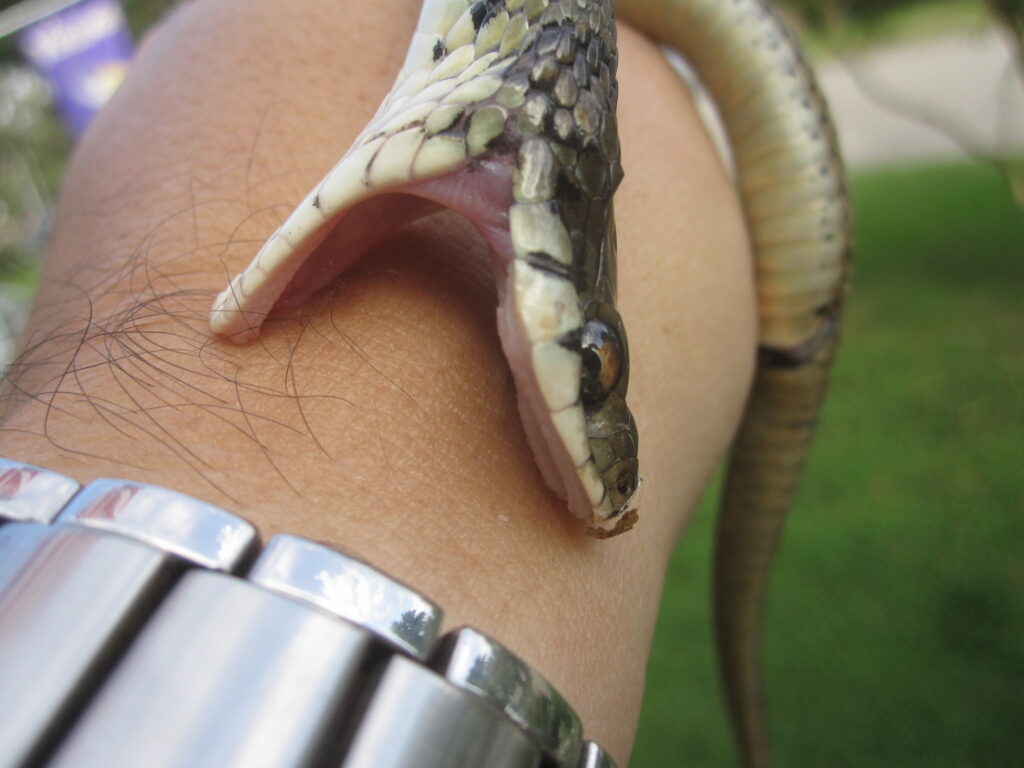
Preventing snake bites begins with awareness and caution when in potential snake habitat, including wearing appropriate footwear, using hiking sticks to probe ahead on trails, and avoiding placing hands or feet in areas you cannot see clearly such as rock crevices, dense vegetation, or hollow logs. If you encounter a venomous snake, the best response is to remain calm, give the animal plenty of space, and allow it to retreat without interference—most snake bites occur when people attempt to kill, capture, or harass snakes. Should a venomous snake bite occur, modern medical advice emphasizes keeping the victim calm, removing constrictive items like jewelry or tight clothing near the bite site, keeping the affected limb immobilized at approximately heart level, and seeking immediate medical attention—contrary to outdated first aid techniques, do not apply tourniquets, cut the wound, attempt to suck out venom, or apply ice.
Remember that identification of the snake species can be valuable for medical treatment, but this should never take precedence over getting the victim to a hospital quickly, as all venomous snake bites in the United States are treated as medical emergencies requiring professional care and, when appropriate, antivenom therapy.
The United States hosts a fascinating array of venomous snakes that have evolved specialized adaptations to thrive in diverse ecosystems across the country. From the massive Eastern Diamondback Rattlesnake of southeastern forests to the desert-adapted Sidewinder with its unique locomotive style, these serpents represent an important component of America’s natural heritage and play vital ecological roles as predators. While their venoms pose potential dangers to humans, most of these species prefer to avoid confrontation and will only bite as a last resort when threatened. With appropriate knowledge, respect, and preventative measures, outdoor enthusiasts can safely coexist with these remarkable reptiles. Understanding their appearance, behavior, and habitat preferences not only helps reduce negative encounters but also fosters a greater appreciation for these often misunderstood creatures that have slithered across North American landscapes for millions of years.

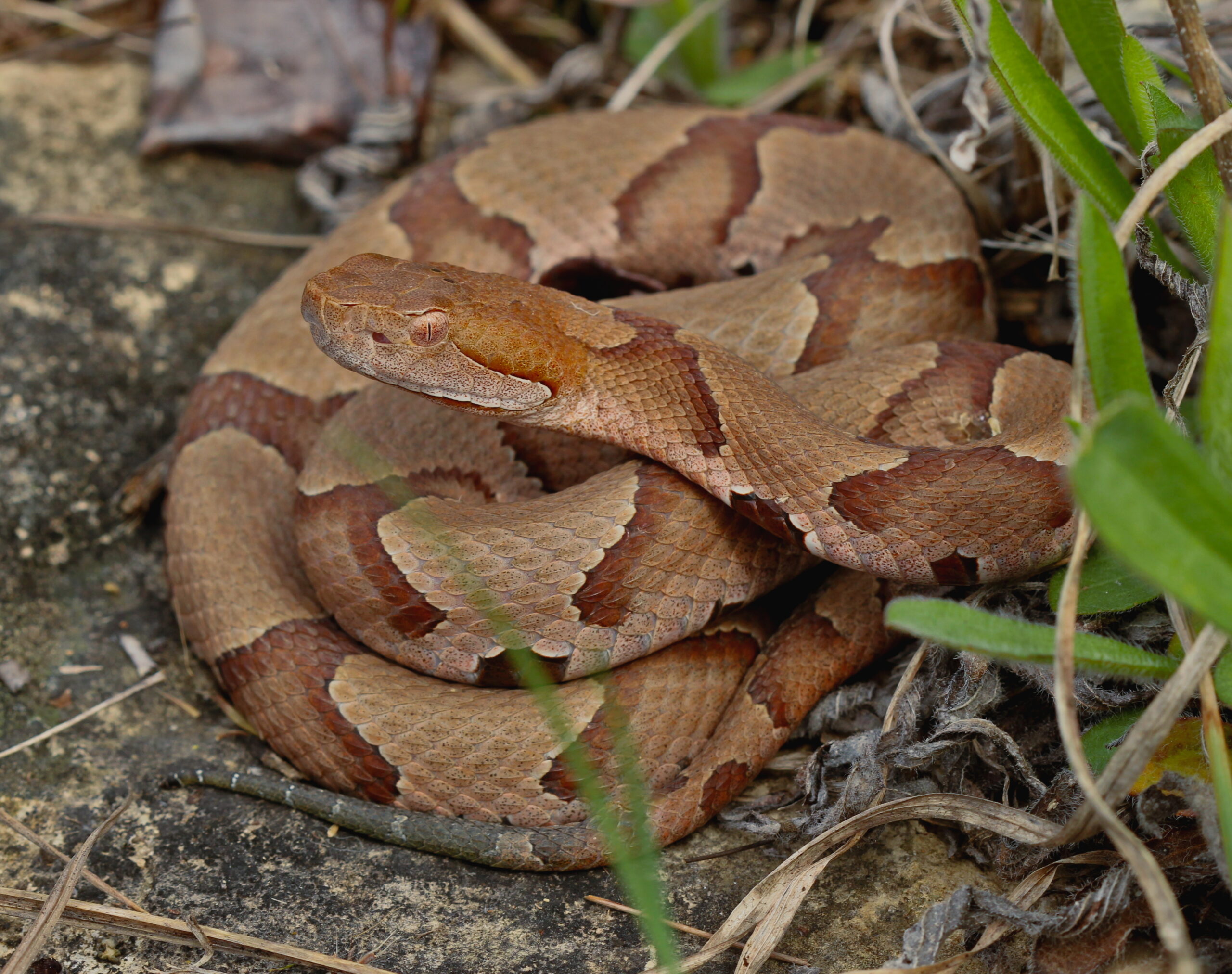
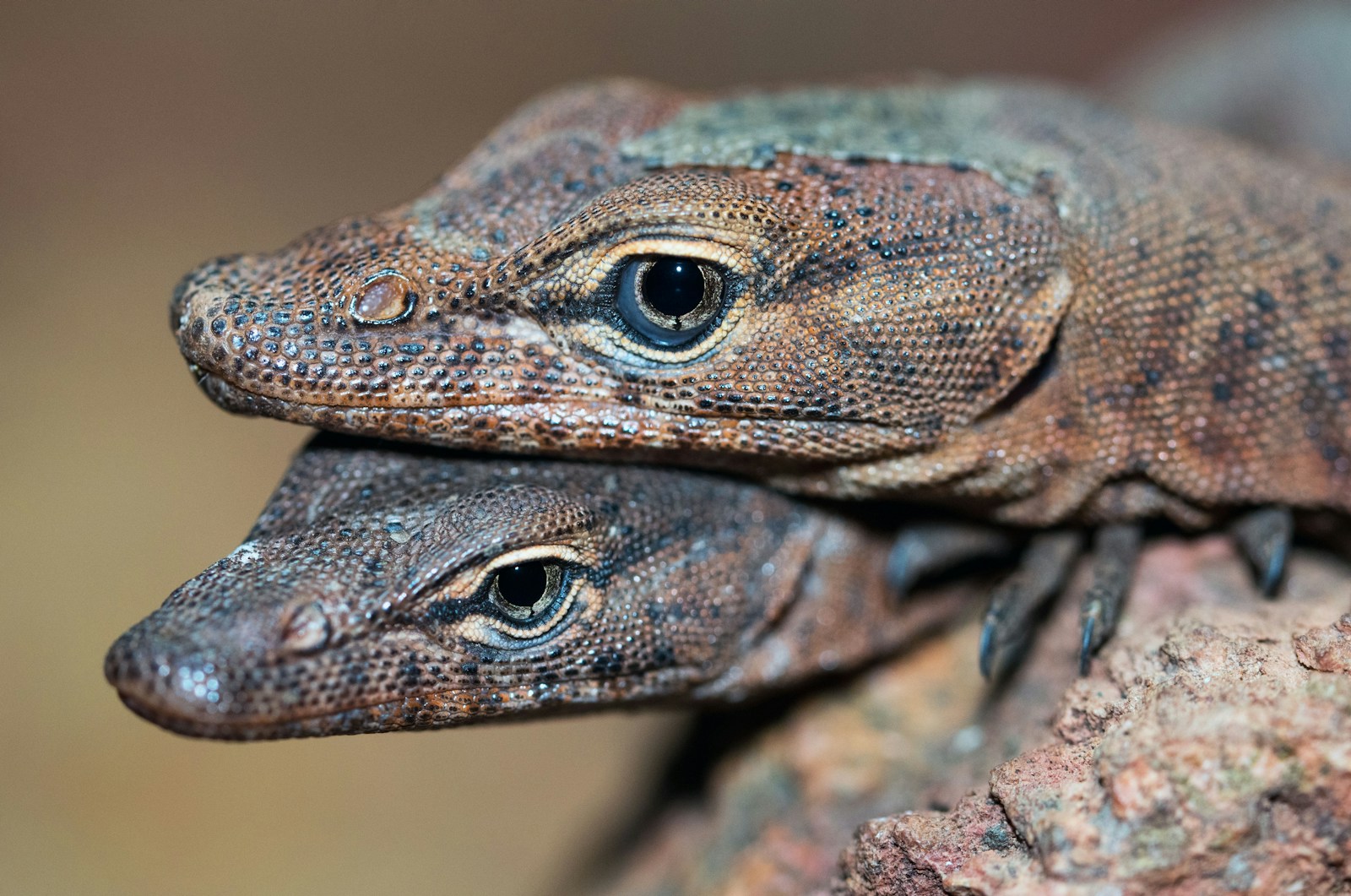
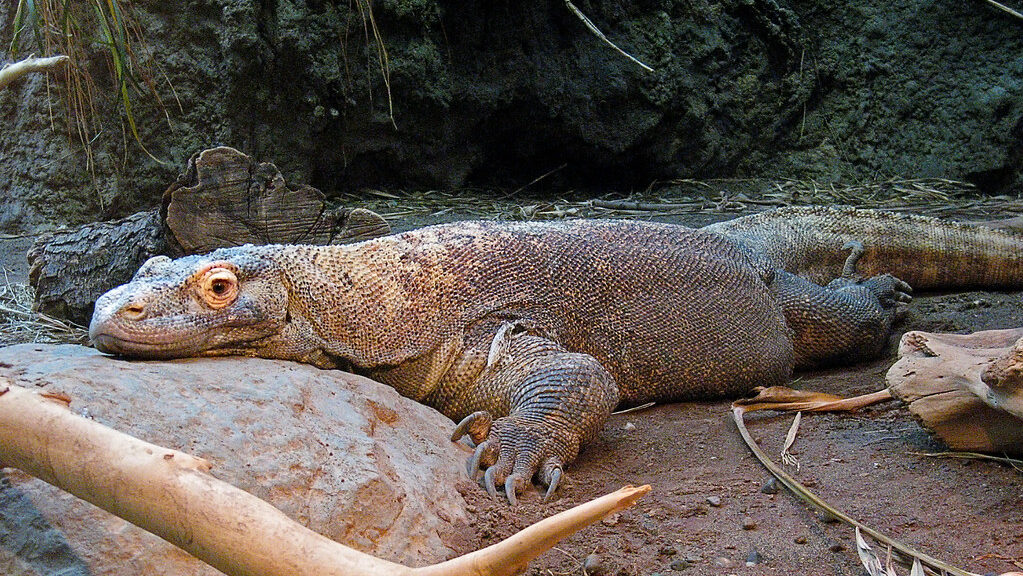
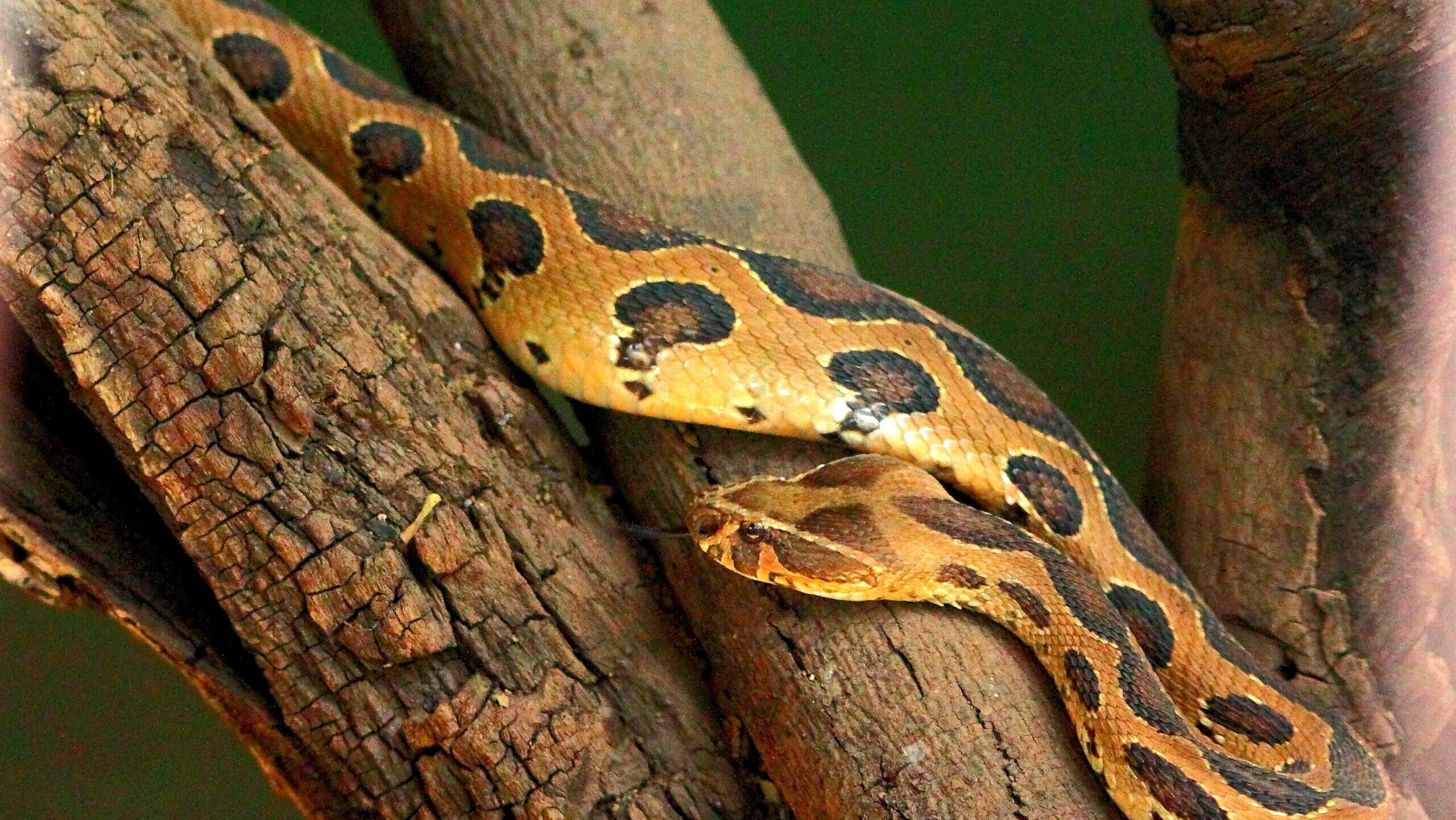
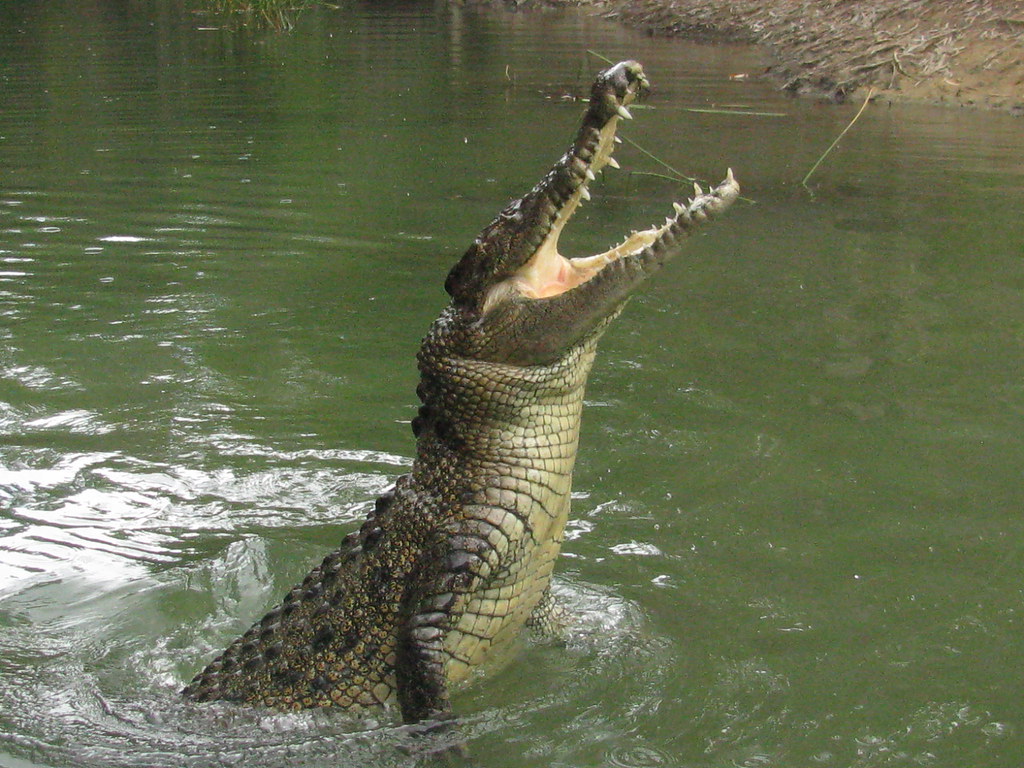
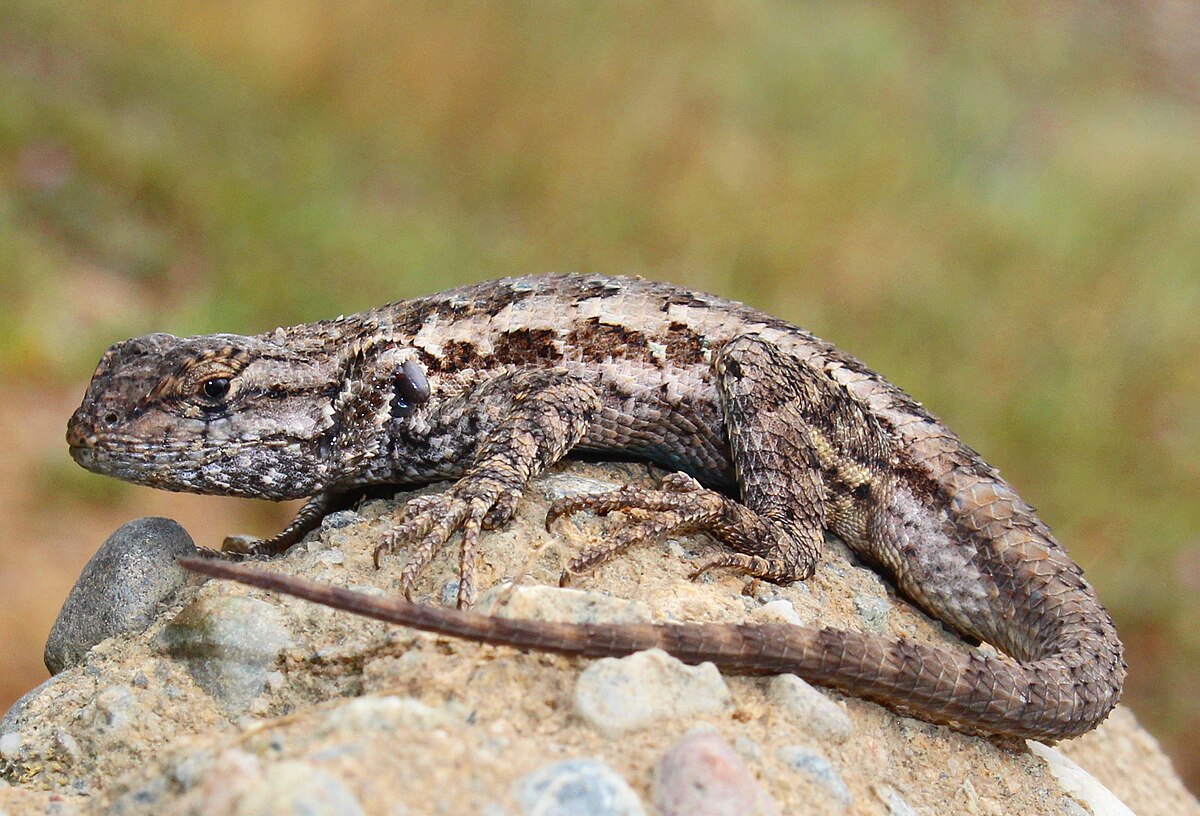
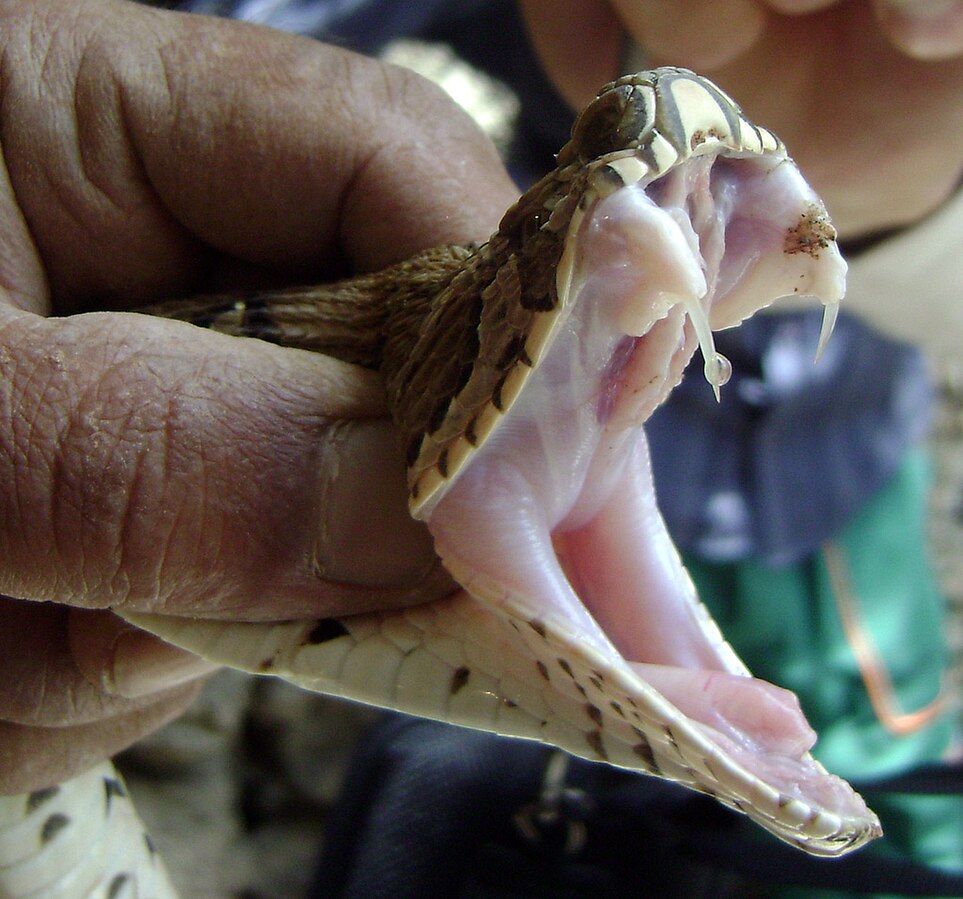
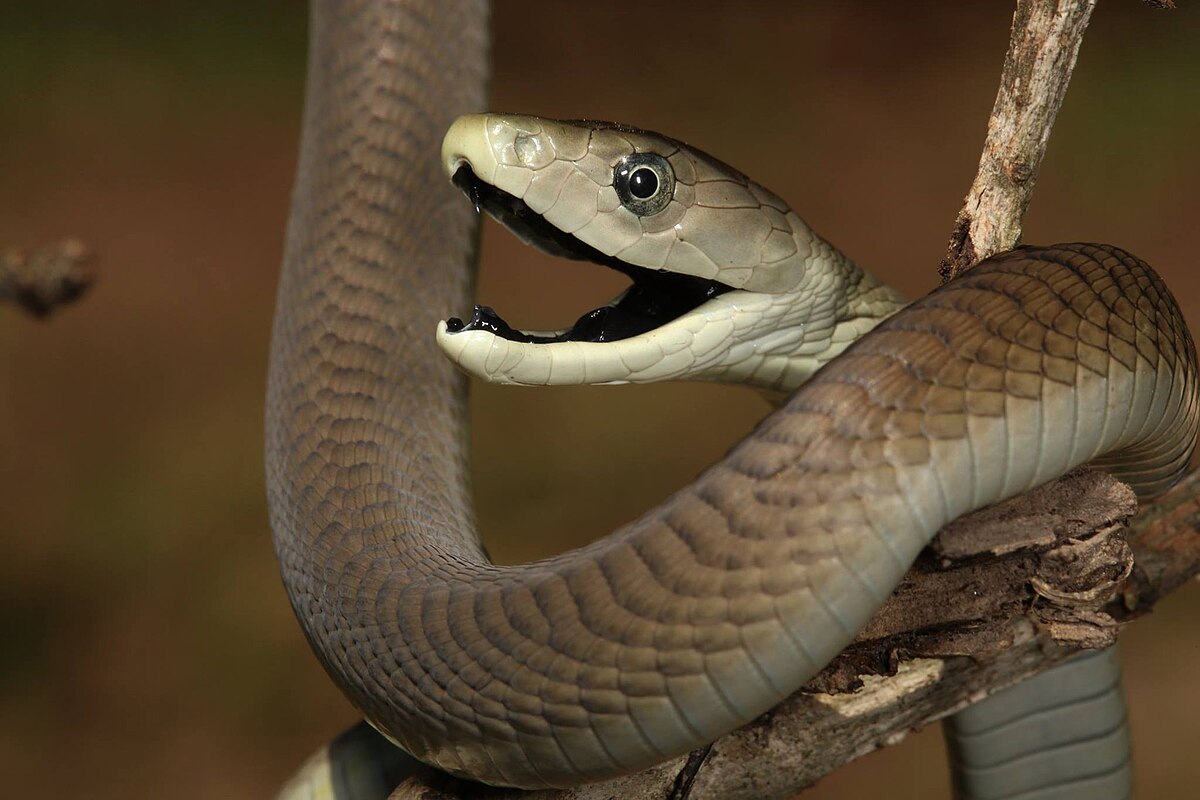
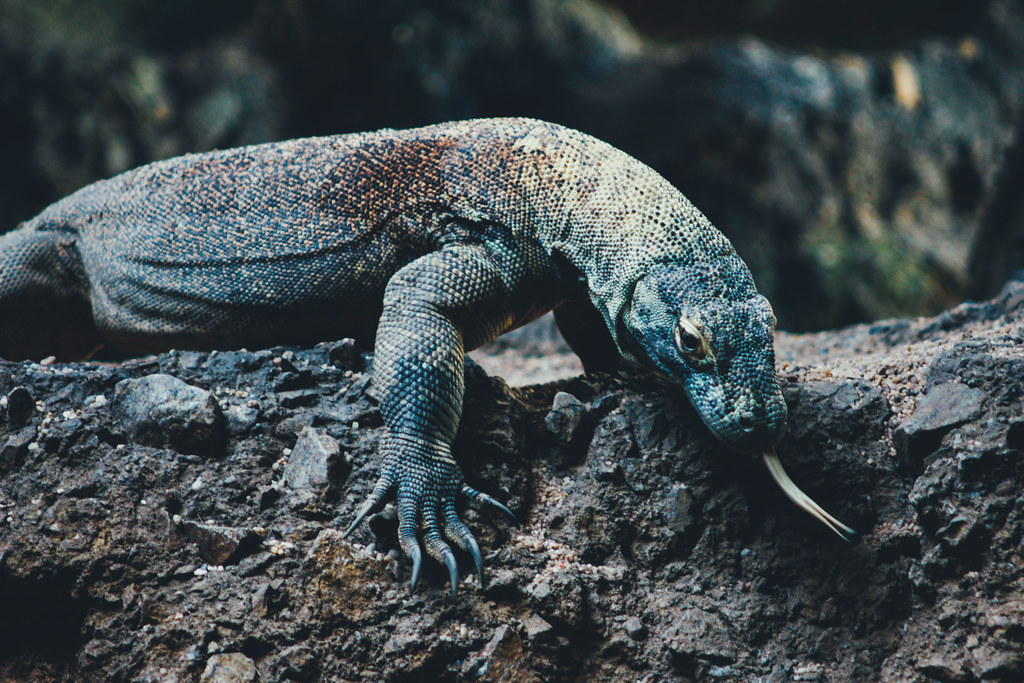
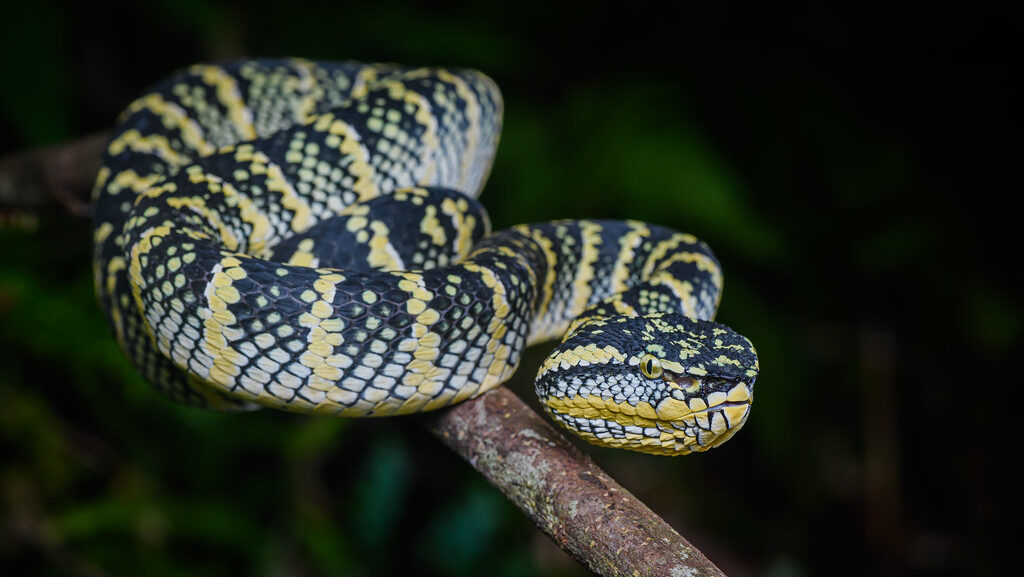
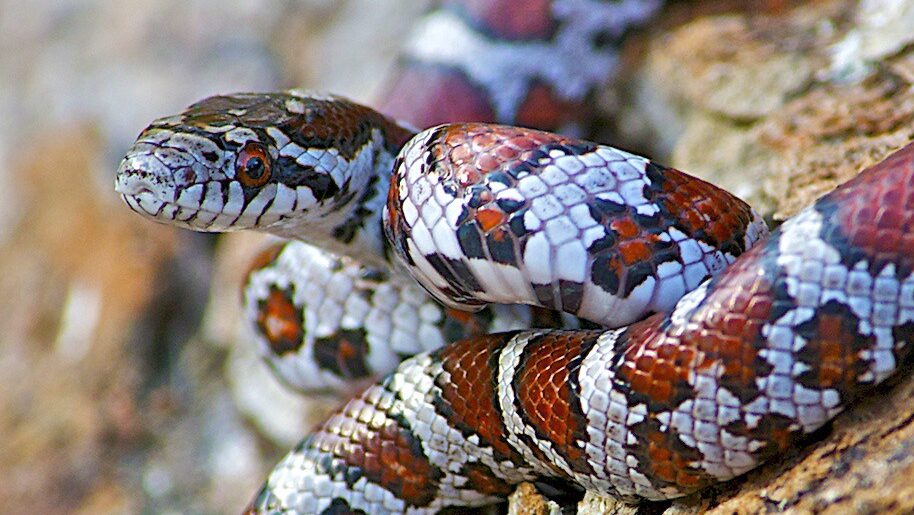


Leave a Reply